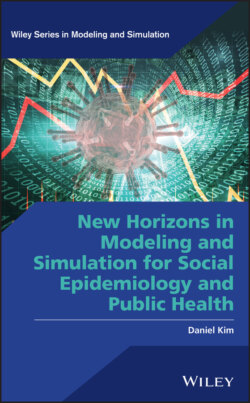Читать книгу New Horizons in Modeling and Simulation for Social Epidemiology and Public Health - Daniel Kim - Страница 24
2.2 Specific Advantages of Agent‐Based Modeling and Microsimulation Modeling Agent‐Based Modeling
ОглавлениеAgent‐based modeling (ABM) offers four specific advantages for public health research. First, because each actor in the system under study can be explicitly represented, no aggregation or statistical summary is required in treatment of either individual characteristics or outcomes. As a result, ABM is a powerful tool for considering heterogeneity—whether in biology, cognition, demography, or context. This is especially important for topics such as health disparities (Kaplan et al. 2017). Second, ABM offers an effective way to consider adaptation—processes of learning, evolution, or bidirectional interaction between individuals over time. This means that not only can we consider short‐run impacts of policies or interventions, but we can also explore potential impacts over very long time horizons. Topics such as obesity, antibiotic resistance, and developmental origins of health and disease often benefit from such considerations. Third, ABM is able to incorporate very sophisticated representations of structure and space, including social network data, physical space data from geographic information systems (GISs) or light detection and ranging (LIDAR), and biological space (e.g. physiology). Rather than either assuming away spatial elements or reducing them to summary statistics (for example, zip code‐level density of retailers), agent‐based models can carry a full accounting of spatial exposure and interaction throughout the dynamic simulation. Recent efforts to consider “precision prevention” in communities (Gillman and Hammond 2016; Economos and Hammond 2017) and retailer‐oriented tobacco control policies (Luke et al. 2017) leverage this facility of ABM. Finally, ABM is well suited for multilevel modeling. Each individual agent can contain detailed representations of “below‐the‐skin” processes such as energy balance, cognition, decision‐making, or disease progression; at the same time, the agents can interact with each other, with physical environments, and with population‐level signals (Hammond 2009; Hammond and Ornstein 2014). Although arguably essential to full understanding of many chronic disease challenges, crossing the “skin barrier” remains rare in social epidemiology.
